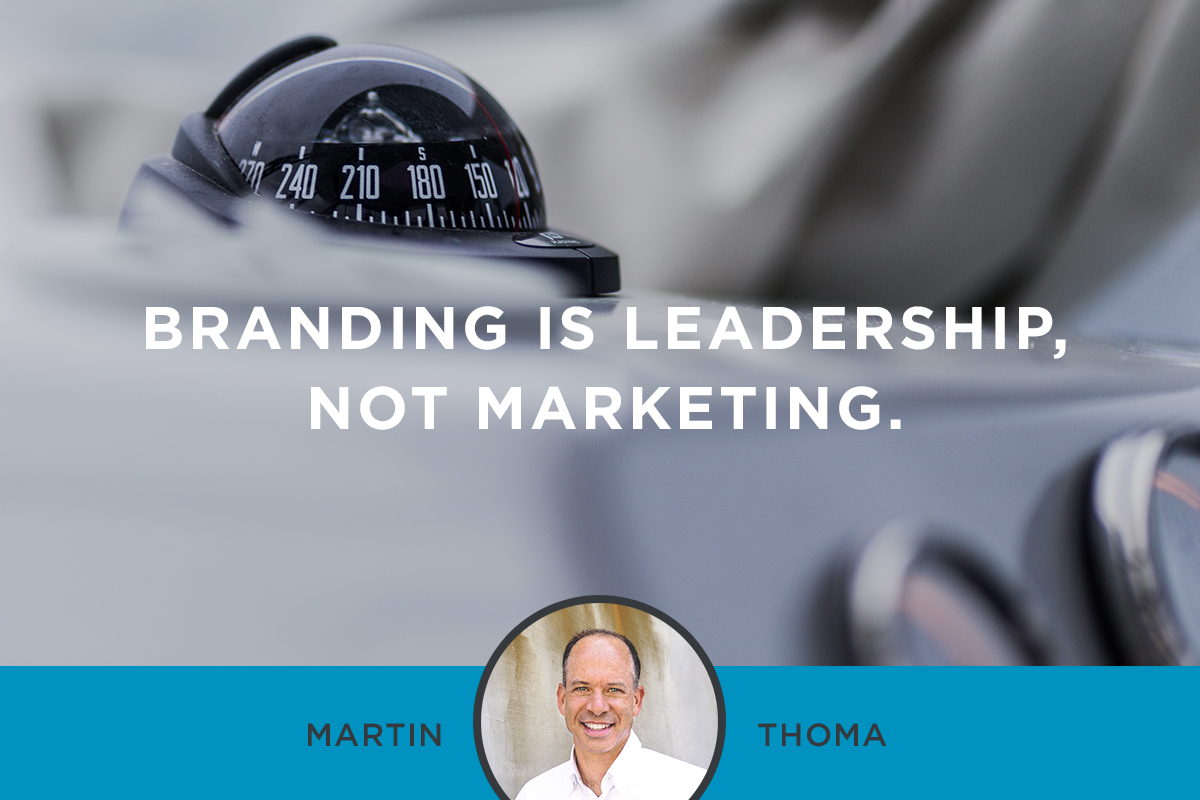A powerful and competitive brand is not something you solely advertise or design. It’s everything you are and do.
This means that “branding” is leadership, not marketing.
Consider this: if you transplanted all the people at Walmart into Nordstrom, would it still be Nordstrom? The walls, the clothes, the displays, the slogan, the advertising would still be Nordstrom’s. Only the people would be different. Is it still Nordstrom? What if you reversed the operation? Is the result still Walmart?
Could you transplant all the engineers at Microsoft into Apple and hope to produce the next iPhone? Could you swap out the team at Southwest Airlines for Virgin’s or American Airlines’ employees and still have Southwest?
The answer to all of these “thought experiments,” of course, is “of course not!”
It proves the point. Great companies — and powerful brands — have deeply ingrained cultures, customer service delivery models, modi operandi.
A brand is a living, breathing, evolving thing. The job of the brand leader is to ensoul it.
A highly clarified brand gives an organization a powerful sense of self and purpose. It can align and shape the culture, influence product development, and guide the behavior of your organization in the market place. This is critical to service organizations; it’s surprisingly cogent to manufacturers and consumer products companies, as well.
Discover why your brand is a theory, not a logo.
Brand leaders must create compelling, crystalline clarity regarding their companies’ missions, products, purposes and brands.
A great example of brand leadership in action is former president of Philander Smith College Dr. Walter Kimbrough. When Kimbrough joined Philander Smith, the college was on its knees. Alumni engagement was miserable, student enrollment and entering ACT scores were falling, philanthropic support was anemic. Among other critical imperatives, Kimbrough understood that the college had to develop a “unique identity.” That is, a brand.
Through a lot of corporate soul-searching (aka brand research and strategy development), Kimbrough and his team recognized the opportunity to redefine Philander as a “crucible of thought, inquiry and action in social justice.” This wasn’t just a tagline, it was a manifesto. New logo, new tagline, new website, new speeches soon developed.
What happened?
The next entering freshman class was larger and higher-scoring than any class in many years; the next year’s freshmen entered in numbers nine percent greater yet. The college was awarded a nearly $1 million grant from the United Negro College Fund to strengthen its development program. Later the Kresge Foundation gave $1 million to seed a new Center for Social Justice. John Wilson, director of the Obama White House Initiative on Historically Black Colleges and Universities (HBCUs), paid a visit to Little Rock to proclaim that Philander Smith was doing exactly what all HBCUs should be doing — carving out a differentiated position, claiming unique territory and making themselves relevant to a new generation of young people. More than anything else, brand leaders provide clarity and purpose.
Howard Schultz at Starbucks comes to mind. His vision was about elevating the U.S. coffee consumer to the idealized experience he had enjoyed while touring Italy and sampling its neighborhood espresso bars.
Herb Kelleher, the founder and builder of Southwest Airlines, comes to mind. Sam Walton. Bill Gates. Each of these CEOs had or has a unique and powerful vision for what their companies were in the world to do. They operate from a “north star” that guides and informs every decision.
None of these CEOs started out saying, “I’m going to build an iconic brand.” They said, “I’m going to create the best damn [fill in the blank] the world has ever seen.”
And it’s exactly this paradox that makes the CEO the most important and influential brand steward any organization can have. So what’s required of the CEO to steward the brand?
- Know what it is
- Know what it isn’t
- Be champion, cheerleader, communicator
- See and be seen
- Carry the flag and bang the drum
For the CEO and his senior team to be most effective at directing and protecting the brand, it might be helpful for them to have a manifesto, a map of the territory, a ten commandments or some other guidance system. Does your company have such a “Brand GPS?” Email me or contact us.

